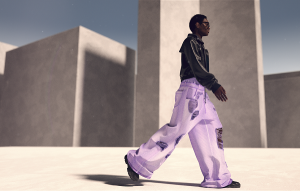High-Fidelity Garment Simulation with Style3D
Introducing Style3D, a powerful clothes design software that offers high-fidelity garment simulation capabilities. With its patented GPU simulation engine, Style3D enables fast and accurate simulations for various aspects of garment design, including multi-layer garment collisions, object and garment collisions, and soft body simulation. Style3D caters to the cloth simulation needs of the CG industry workflow, providing designers with advanced tools for realistic garment behavior.

Patented GPU Simulation Engine for Realistic Results
Style3D utilizes a patented GPU simulation engine that delivers fast and accurate garment simulations. Designers can simulate multi-layer garment collisions, ensuring that garments behave realistically when worn in layers. Additionally, the software enables object and garment collision simulations, allowing designers to account for interactions between garments and other objects in the virtual environment. Moreover, Style3D supports soft body simulation, enabling designers to accurately simulate fabrics with varying levels of elasticity and softness.
Automated Features for Streamlined Workflow
Style3D streamlines the garment design process with its automated features. The software offers auto UV mapping, which automatically maps textures onto the 3D garment model, eliminating the need for manual texture adjustments. Additionally, Style3D provides auto quad mesh generation, ensuring that the garment model has a clean and optimized mesh structure, ready for simulation and further design iterations.
Conclusion
Style3D’s patented GPU simulation engine enables fast and accurate simulations for multi-layer garment collisions, object and garment collisions, and soft body behavior. By catering to the cloth simulation needs of the CG industry workflow, Style3D empowers designers to create virtual garments that behave realistically. The software’s automated features, such as auto UV mapping and auto quad mesh generation, further enhance the workflow, streamlining the design process and reducing manual editing requirements.
